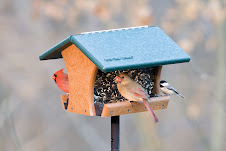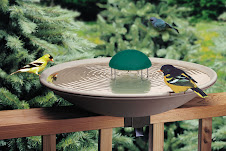.jpeg) Through life’s experiences you're likely to just “know” when autumn is in the air. No matter where you live across North America, clues like cooler temperatures, lower humidity, and even kids returning to school let you know that seasonal change is underway.
Through life’s experiences you're likely to just “know” when autumn is in the air. No matter where you live across North America, clues like cooler temperatures, lower humidity, and even kids returning to school let you know that seasonal change is underway.Likewise, wild birds “know” when it’s time to head for their winter homes. The wonder of fall migration is just part of a bird’s annual life cycle. The fall journey is triggered by changes in available food sources, day length and temperature as more than 300 species leave the United States and Canada to winter as far away as South America.
And what a journey they make! Some of their trips top 7,000 miles and include flying over the Gulf of Mexico. Amazingly, birds migrate without benefit of a compass or other navigational tools. Some birds seem to migrate by orienting themselves to stars. Others seem to have built-in magnetic compasses.
Studies have demonstrated that 95 percent of the migratory movements occur at less than 10,00 feet, with the majority of the flights occurring under 3,000 feet. Most small birds generally favor altitudes between 500 and 1,000 feet.
Birds rely on stopover habitats for survival on their fall trek. Keeping feeders filled with fresh seed and an open water source in your backyard can play an important role in ensuring migration success. Watch your feeders closely this time of year! You may catch a glimpse of birds, not common to your backyard, stopping by to refresh and refuel along the way. A good pair of binoculars, a spotting scope, and a comprehensive bird indentification book will enhance your ability to enjoy all the beauty as they fly south for the winter.











